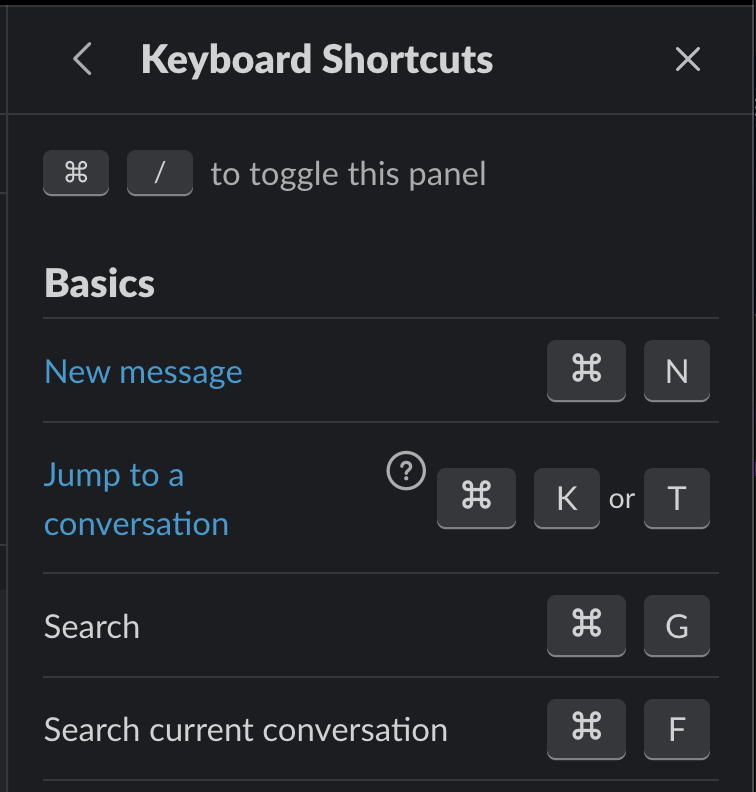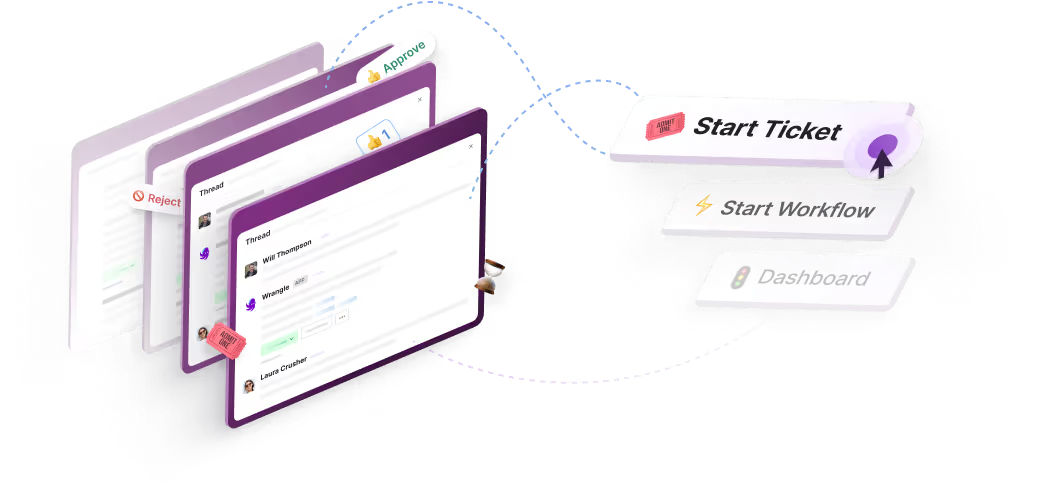8 Useful Slack Keyboard Shortcuts
Find out how leveraging Slack keyboard shortcuts unlocks power, user speed, and efficiency in one of your most important work tools


Slack provides enormous power user functionality. Many Slack operations have built-in keyboard shortcuts. In this post, we review eight of the most useful Slack keyboard shortcuts and the situations you use them in. Let's dive in.
Note: We'll refer to Windows shortcuts, meaning that we'll say Control + [key], but if you're using a Mac, substitute the Command key instead of Control for all of these key combinations.
Most Useful Slack Keyboard Shortcuts
Control + K (or T) – Search for Conversation
Pressing this key combination will pop up a search bar, and you can immediately start typing. Whatever you type will begin searching for the names of individuals, group conversations, and permanent channels on your Slack instance. If your work Slack is anything like mine, you likely have dozens of channels and direct messages.
You can find important information fast by simply entering a keyboard shortcut and starting to type the name of a user or channel. This shortcut is a massive time saver if you're working on multiple conversations simultaneously.
Control + Z – Unsend Message
Slack allows you to easily un-send a message. You’ll often encounter this behavior if you draft a longer message and accidentally push Enter instead of Shift + Enter to start a new line. Thankfully, by quickly hitting Control + Z, you'll un-send your last message.
[Up], e – Edit Previous Message
I type fast, and I can't count the number of times I send a message, then notice a typo in a word toward the end of the message. Whoops! For situations like this, instead of un-sending the entire message, I'll simply hit the up arrow, then push e, allowing me to edit the previously sent message.
One important note about this shortcut: it only works when your message editing section is empty. If you have already started typing text, this shortcut will continue editing your current message.
Control + F – Find in Conversation
Many Slack conversations between colleagues are long and contain essential information. Sometimes that information is valuable months later. While Slack allows you to pin a message in a conversation, you don't always know that a message will be helpful until you refer to it later. That's what the Find functionality is for. By pressing Control + F, you'll start a Slack search within your current channel or conversation.
Control + G – Find in Slack
The Find in Slack shortcut is the superhero version of the previous keyboard shortcut. Instead of searching within the current conversation, this shortcut unlocks the ability to search within every channel available to your account within your Slack workspace. Slack search provides a wide range of tools to find the messages you're looking for, which is why Slack can be more powerful than traditional email. With an email client, you can easily search through every email you've received. With Slack search, you can search through the equivalent of every public email anyone has ever sent at your company. That makes sharing knowledge across the company much simpler.
Control + [ – Back in History
Slack doesn't include a time machine as part of their install package. But Slack channels do operate like browser webpages. Slack keeps an internal history of the last channels you've visited, and by pressing Control + [, Slack will take you back in time to the "page" you visited previously. This functionality is vital when involved in multiple conversations and trying to coordinate between different channels. Using the keyboard to hop between channels speeds up the process.
Control + ] – Forward in History
This is a twin of the previous shortcut. Note that this shortcut will only work if you've navigated back to a channel. Slack can't predict which channel you want to visit. Like your web browser, the back-and-forward functionality makes moving between linked pages quick and easy.
Control + / – Open the Shortcuts Menu
We couldn’t cover every shortcut in this article, but we’ve highlighted some of the most popular. If you’re looking for a complete reference guide, pressing Control + / pops open a drawer on the right side of the app window that provides a scrollable list of supported keyboard shortcuts. Depending on the theme you use, it'll look a little bit like this:

Automate Ticketing and Workflows in Slack with Wrangle
If you’re here, chances are you love working in Slack. So do we. Wrangle is a ticketing and workflow automation platform that is built for Slack. We’re here to help businesses automate their IT help desk and business processes directly in their Slack channels. Teams use Wrangle in to manage their:
- IT Help Desks
- IT Access Requests
- Procurement Process
- Marketing Collateral Approvals
- Employee Onboarding and Offboarding
- Customer Onboarding
If it’s a process that needs automation in Slack, Wrangle has you covered. We’re the perfect tool to deploy if you want to manage internal tickets or requests in your Slack workspace. Our no-code platform allows you to build workflows, manage tickets, and report on business KPIs.
To get started, try the app today and see firsthand how Wrangle can improve communication within your company. We can also provide you with a personalized demo, which you book on our website.
Eric Boersma wrote this post. Eric is a software developer and development manager who's done everything from IT security in pharmaceuticals to writing intelligence software for the US government to building international development teams for non-profits. He loves to talk about the things he's learned along the way and enjoys listening to and learning from others.

- Try Wrangle free for 14 days
- Turn messages into trackable tickets
- Build a scalable help desk



Turn Slack into a productivity powerhouse with Wrangle
Create a scalable helpdesk in Slack. Automatically turn messages into trackable tickets and provide faster, more transparent service to your colleagues and customers with Wrangle — Try it free!






